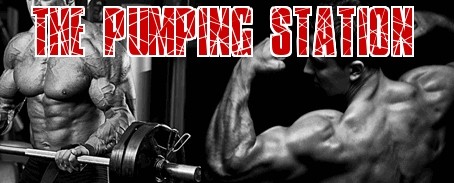Why Working Your Legs Helps Build Your Upper Body
In the realm of physical fitness, the relationship between lower body workouts and upper body strength is a topic of much debate. While it may seem counterintuitive, the truth is that focusing on exercises that engage the legs can have a significant impact on the development of the upper body. This essay aims to delve into the various ways in which working the legs can propel overall upper body strength, debunking myths and shedding light on the interconnectedness of muscle groups within the body.
Understanding Muscle Activation
Muscles work in tandem, with the activation of one group often influencing the performance of another. When it comes to lower body exercises such as squats and deadlifts, there is a substantial amount of muscle activation occurring not only in the legs but also in the core and upper body. These compound movements require the engagement of multiple muscle groups to execute proper form and generate power.
The Role of Core Stability
One of the key benefits of lower body training is the enhancement of core stability. The core acts as a stabilizing force for the body, and a strong core is essential for executing various upper body exercises effectively. By strengthening the core through lower body workouts, individuals can improve their posture, balance, and overall strength, leading to better performance in upper body movements.
Transfer of Power
Power generation is a crucial aspect of building upper body strength. Lower body exercises such as lunges and leg presses can significantly contribute to this process by enhancing the body's ability to generate force from the ground up. The transfer of power from the legs to the upper body is essential for executing explosive movements like overhead presses and push-ups with greater efficiency and effectiveness.
Enhanced Muscle Growth
Muscle growth, also known as hypertrophy, is a primary goal for many individuals engaging in resistance training. Lower body exercises that target large muscle groups such as the quadriceps, hamstrings, and glutes can stimulate overall muscle growth throughout the body. The release of key hormones such as testosterone and growth hormone during lower body workouts can promote muscle hypertrophy in the upper body as well.
Improved Stability and Balance
Stability and balance are vital components of physical fitness that impact performance in various activities. Lower body training helps improve proprioception and kinesthetic awareness, which are essential for maintaining stability during upper body movements. By enhancing stability and balance through leg exercises, individuals can reduce the risk of injury and optimize their performance in exercises targeting the upper body.
Prevention of Muscle Imbalances
Muscle imbalances occur when certain muscle groups are stronger or more developed than others, leading to poor posture and increased risk of injury. Lower body workouts play a crucial role in preventing muscle imbalances by ensuring that all major muscle groups are engaged and strengthened. By maintaining symmetry between the lower and upper body, individuals can achieve optimal muscle balance and overall functional fitness.
Integration of Functional Movements
Functional movements mimic real-life activities and require coordinated muscle activation across multiple joints and muscle groups. Lower body exercises such as step-ups and kettlebell swings engage the entire body in a harmonious manner, promoting functional strength that translates to improved performance in daily tasks and sports activities. The integration of functional movements through lower body training enhances overall body coordination and muscle recruitment.
Enhanced Metabolic Response
The metabolic response to exercise plays a significant role in fat loss and overall physical conditioning. Lower body workouts are highly demanding in terms of energy expenditure, leading to an increase in metabolic rate during and after training. This heightened metabolic response can support weight management goals and contribute to overall body composition improvements, including the development of a leaner and more defined upper body.
Injury Prevention and Rehabilitation
Lower body training is not only beneficial for building upper body strength but also plays a crucial role in injury prevention and rehabilitation. Strengthening the muscles and connective tissues of the lower body can help protect the joints and spine from excessive stress during upper body exercises. In cases of injury, targeted lower body workouts can facilitate the recovery process by improving circulation, range of motion, and overall functional capacity.
For more muscle building information checkout How To Build Huge Muscles Fast
Click Here to Sign Up for Your Free Bodybuilding Magazine Subscription
